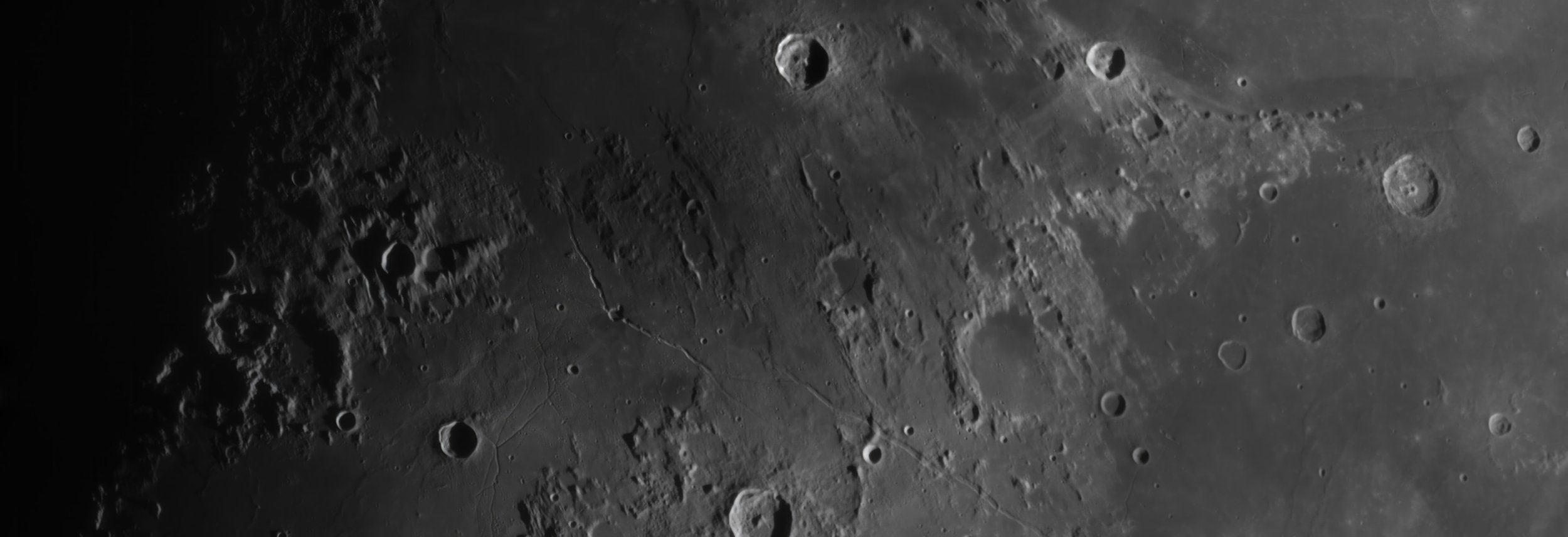LUNAR PHOTOGRAPHY
Lunar photography focuses on capturing detailed images of Earth’s closest celestial neighbour, the Moon. As one of the brightest and most prominent objects in the night sky, the Moon offers endless opportunities for both beginner and advanced astrophotographers to hone their skills. Whether it’s a stunning full moonrise, a dramatic crescent phase, or the textured surface of craters and lunar seas, the Moon provides a canvas for artistic and scientific exploration.
Unlike other forms of astrophotography, lunar photography is accessible with minimal equipment. Even with a basic DSLR or mirrorless camera and a telephoto lens, you can achieve impressive results. However, using a telescope or a long focal-length lens can reveal intricate surface details, making this form of astrophotography both versatile and rewarding.
Lunar photography bridges the gap between art and science, offering an ever-changing subject that reflects the beauty of the cosmos and the precision of astrophotography.

Lunar photography often highlights:
Phases of the Moon: From the delicate crescent to the dramatic full moon, each phase offers unique lighting and compositional opportunities.
Surface Features: Craters, mountains, and lava plains (Maria) can be captured in stunning detail, especially along the lunar terminator, where shadows enhance the texture.
Lunar Events: Eclipses, supermoons, and conjunctions with planets or stars provide dynamic and rare photographic moments.
Featured Video
Join me as I capture and edit a stunning full moon image from my backyard on a rare clear evening. I'll guide you through the process of taking high-resolution photos of the Moon and reveal my secret techniques to highlight its subtle colours and intricate details. We'll explore why the full Moon's brightness can be challenging for observing faint deep-sky objects, but how it's perfect for capturing features like bright ejecta rays from craters.
You'll learn about 'lucky imaging,' a technique to minimize blurring by merging the sharpest frames from multiple shots. But the real magic is discovering how to enhance the Moon's natural colour variations, showcasing its geological diversity and beauty. I'll also demonstrate that you can easily try these techniques with basic equipment.
Towards the end, I'll share a photo taken with a mirrorless camera and a 600mm telephoto lens mounted on a regular tripod. That means you can utilize the techniques from the video to enhance the detail and colour in your images taken with your photography gear.

Lunar photography requires:
Gear for Wide and Close-Up Shots: For capturing the Moon in landscapes or during moonrise, a telephoto lens (200-400mm) paired with a DSLR or mirrorless camera works beautifully. For high-resolution images of surface details, such as craters or lunar seas, a telescope with a long focal length (1000-2000mm or more) combined with a high-frame-rate planetary camera is ideal.
Filters and Accessories: When photographing surface details, consider using an infrared pass or neutral density filter to enhance contrast and reduce glare. For wide shots, a sturdy tripod and a remote shutter release are essential.
Optimal Settings: Use a fast shutter speed to avoid motion blur, especially when shooting close-ups. Experiment different settings to balance exposure and sharpness.
Timing and Technique: To capture intricate surface textures, focus along the lunar terminator, where shadows create dramatic contrast. For wide compositions, golden hour or twilight provides a beautiful balance of light.
Lunar photography is an approachable yet rewarding branch of astrophotography, perfect for capturing the natural beauty of our closest celestial companion.
More videos
Lunar Photography with a Smartphone:
Modern smartphones have made significant advancements, but most lack the optical reach to capture high-quality moon images on their own. However, with a few additional accessories, it is possible to photograph the Moon using a smartphone. An eyepiece smartphone holder allows you to attach your phone to a telescope or binoculars for increased magnification, while a simple tripod ensures stability. With a bit of patience and experimentation, you can achieve impressive lunar shots even with just your phone.









